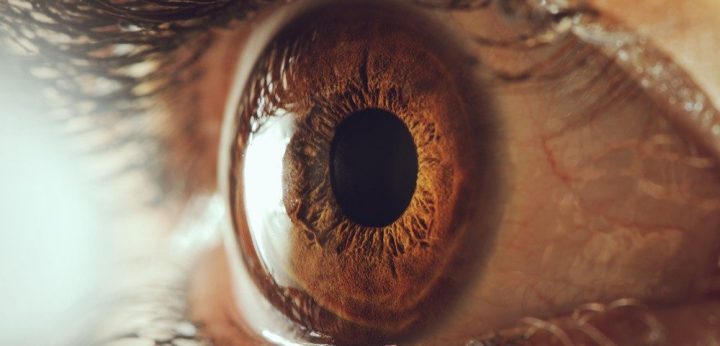It’s Becoming Clearer: Eyes Can Also Be Affected by Sarcoidosis
Written by |

My pulmonologist advised me to schedule appointments with several specialists after I was diagnosed with sarcoidosis. These specialists included an eye doctor and a cardiologist, but I hadn’t made the eye appointment yet.
I’ll admit that I was overwhelmed by the steady stream of doctors and tests. Eager to restore some normalcy to my life, I just did not want to see any additional doctors. Then one day, everything around me was blurry. I couldn’t put off making the appointment any longer.
The problem was only in my right eye. My vision was blurry, fuzzy, and limited. I tested it for a few days after my discovery. First, I closed my right eye to gauge how well I could see out of my left eye. Then I would do the same with the other eye for comparison. Unfortunately, the results in my right eye weren’t good.
I could barely make out the license plate of the car ahead of us as I sat in the passenger seat. I was concerned, especially because I already wore corrective eyeglasses.
The pain was really what forced me to the doctor’s office. My eyeball had developed an aching, heavy, constant pain. I never realized your eyeball could hurt, let alone this badly.
The diagnosis was uveitis, an inflammation of the eye, which was a result of the sarcoidosis. I was surprised at this development, nearly a year after the sarcoidosis was diagnosed.
I found myself visiting one eye doctor after another. Finally, I landed in the office of a retina specialist. I could barely see out of my right eye at this point. I was forced to stop the reading, knitting, and beadwork that was supposed to help me through my anticipated recovery. Instead, I parked myself in front of the TV, watching reruns of sitcoms (out of my good eye) for hours on end.
The retina specialist delivered the news that I had developed uveitic glaucoma. The pressure in my right eye continued to rise, which explained the visual challenges.
Then the rigorous treatment regime began. I visited the retina specialist several times each week. The number of visits depended on how high the pressure had been at the previous appointment. This continued for approximately four months.
The second part of my treatment regime included daily use of several types of steroidal eye drops. It was a fairly complicated routine: one medication had to be administered every few hours; another medication could only be used at 12-hour intervals. In addition, two of the meds could only be used one hour before or after any other medication.
I created a chart to help keep the regimen straight. Still, I was overwhelmed. Mostly, I was upset by my curtailed activity. I couldn’t see properly, which affected even simple tasks. Suddenly, it was a challenge to read instructions and prepare food.
The pressure in my right eye did improve after months of this treatment. Somehow, I managed to survive that summer. The rocky road to dealing with sarcoidosis was becoming much clearer, too.
Yet, some interesting discoveries came out of an otherwise trying time. I was fortunate to find a caring and approachable eye specialist. I learned the importance of patience when dealing with a health crisis. Finally, I realized I could resume my creative work in a new way — altering patterns, or not using any at all — to accommodate my visual changes.
***
Note: Sarcoidosis News is strictly a news and information website about the disease. It does not provide medical advice, diagnosis, or treatment. This content is not intended to be a substitute for professional medical advice, diagnosis, or treatment. Always seek the advice of your physician or other qualified health provider with any questions you may have regarding a medical condition. Never disregard professional medical advice or delay in seeking it because of something you have read on this website. The opinions expressed in this column are not those of Sarcoidosis News or its parent company, Bionews Services, and are intended to spark discussion about issues pertaining to sarcoidosis.






Susan
You are not alone. I have been to a number of eye place, only to hear, that I don't have Sarcoidisis in the eye. But I feel that it is...in so many ways. I would love to have one place to go that handles all facts of Sarcoidisis. Take all the mess out of the mystery of the disease. It's my dream!!
Kate Spencer
Sounds like a great idea, Susan!
D l
The key is not to wait. After my sarcoidosis diagnosis after lung X-rays (was in lymph nodes in lung) didn’t require treatment so I continued to run without issues. But when I started haven’t eye issues immediately my Ophthalmologist immediately sent me to Mass Eye and Ear in Boston directly from her office. She told me this situation was out of her league. Anyways she called ahead and had the Chief of Neurology waiting for me. Next she got me in to see a Neuro Ophthalmologist.. I initially. I had awakened with serious double vision, lost of peripheral vision and immense pain. Long story short after consultation with at least a dozen specialists it was determined to immediately start me on Remicade. Today my sight returned 20/20 without glasses. Neuro sarcoidosis is in remission after being on infusions 4 years. Discontinued a year ago. Eyes are doing well. Occasionally I add Xiidra drops to combat occasional dry eye as needed. Don’t sit on anything having to do with Sarcoidosis.Many people are paying for it with permanent loss of vision. You get only one set of eyeballs.
Anissa
This is my story from beginning to end. It’s amazing how someone else can suffer in the same way and the two not know each other. You grow to learn that your vision is very important and without it some people can become very depressed. This particular I disease really needs to be out in the open some more people will know and understand
Kate Spencer
Those of us who share this story have a common bond.
Dara
I was diagnosed with Pulmonary Sarcoid (+lung lump nodes) April 2016.Also had a skin biopsy in 2015 that listed "granulomas"-no specific type listed on biopsy report but Sarcoidosis was listed in the Differential Diagnosis area.
Got new eyeglasses in August 2020 and exam showed high eye pressure-29 and possibly early Macular Degeneration (AMD).
Since my mother had AMD before she died I had the eyeglasses place call to get me an appointment with my mom's specialist.
Saw him in Sept and they did pictures and he didn't see anything concerning during exam. We talked Sarcoid and he didn't see any Uveitis but wanted me to see a local Glaucoma specialist as my reading was now 37. They saw me that afternoon.
Long exam and wanted me back in a month for pressure reading.
Went on Oct. 8. They did ONH & RNFL pictures and exam showed pressure at 40. in one eye 25 in the other. Put me on two kinds of eye drops - neither a steroid. I go back Oct 26 to check progress and evaluate my cataracts.
AND I got a call from the AMD Dr office saying the pictures show early AMD. I go back there in March.
Then I find Uveitis Glaucoma connected to Sarcoid.
Should I just try to get to a Sarcoid Specialty Center or just let this play out with my local doctors?
I'm 68 years old and also have COPD.
Any suggestions?
Mary
I have been seeking information regarding sarcoidosis and looking for a clinic that specializes. I was diagnosed with Ocular sarcoidosis in January 2022, after a biopsy. No other signs systemically. Using eye drops as prescribed, vision in eye worse than before biopsy. I have a rheumatologist, retinal ophthalmologist, but wonder if there is a sarcoidosis eye specialist available? Any information is appreciated. I live in Michigan.
Deb L not Dl
You need a Neuro Ophthalmologist.
Julie
I am looking for sarcoidosis eye specialist in West Michigan, did you ever find one?